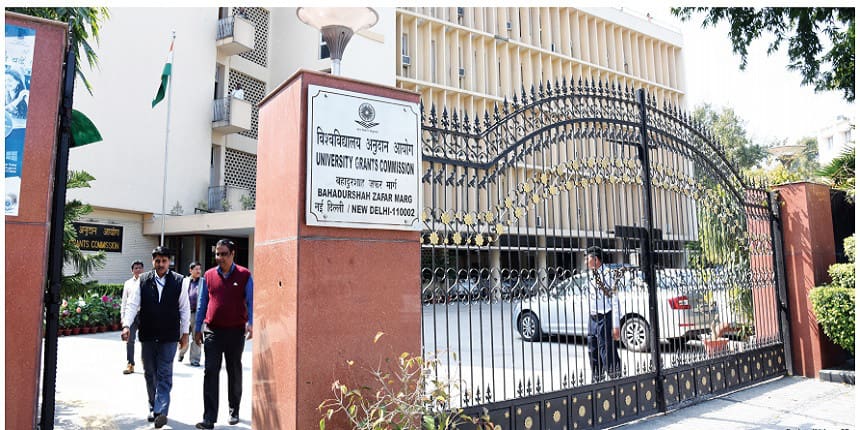NCrF: UGC issues SOPs for implementation of National Credit Framework; highlights
Anu Parthiban | August 7, 2024 | 08:00 PM IST | 3 mins read
NCrF encourages multiple entry and exit, recognition of prior learning and work- embedded programmes that offer opportunities for students to integrate them into formal learning pathways.

NEW DELHI: The University Grants Commission (UGC) has notified the Standard Operating Procedures (SOPs) for the implementation of National Credit Framework (NCrF) in Higher Education, Vocational Education, Training and Skilling (VETS) and school education. The ministry of education constituted a high-level committee to formulate the operationalisation of NCrF.
“I am pleased to introduce the Standard Operating Procedures (SOPs) for operationalising the National Credit Framework (NCrF). The NCrF, notified by the UGC, marks a significant step towards our shared vision of a dynamic, inclusive, lifelong education system that empowers learners with relevant skills and knowledge for the 21st century,” the UGC chairman M Jagadesh Kumar said. The high-level committee with the help of three sub-committees - for school, vocational, skill and higher education - drafted the SOPs.
The National Credit Framework was duly approved by the Government and was notified by UGC on April 10, 2023. Subsequently, the Department of Higher Education on May 10, 2023, constituted a high-level committee to oversee the operationalization and implementation of NCrF.
“NCrF enables creditisation of all forms of learning from the school level onwards and ensures mobility between vocational education, training and skilling to general education and vice versa,” the commission said. The NCrF also gives multiple entry and exit, academic equivalence, and operationalisation of the credit framework.
The NCrF SOPs provide “a clear guide to facilitate the assignment, accumulation, storage, transfer, and redemption of credits across school, higher, and vocational education and training”.
“SOPs address this effectively with the help of the National Higher Education Qualification Framework (NHEQF), National Skill Qualifications Framework (NSQF), and National Curriculum Framework (NCF),” it added.
Also read National Credit Framework (NCrF) Decoded: How India’s students will be marked, from Class 5 to PhD
The framework will also pave the way for seamless lateral entry and credit transfer, promoting flexibility and optimising learning pathways for students on all levels of education.
It also encourages multiple entry and exit, recognition of prior learning and work- embedded programmes that offer opportunities for students to integrate them into formal learning pathways. The objective of the document is to empower educational institutions to become hubs for skill development.
NCrF SOPs: How is credit calculated
Highlights of credit system and credit mobility. Credits will be calculated in the following manner, as per the NCrF guidelines.
- One credit is equivalent to one hour of teaching, lecture or tutorial, or two hours of practical work or field work, or three hours of experiential learning per week. Accordingly, one credit would mean equivalent of 15 hours of theory or 30 hours of workshop or lab work or 45 hours of 13 experiential learning in a semester. (one year or 1200 hours of learning works out to be 40 credits, which on an average is 30 hours per credit including lectures and tutorials, practical work, and experiential learning)
- For internship or field work, the credit weightage for equivalent hours is 50% of that for lectures or tutorials.
- For apprenticeship, the credits would be calculated in terms of duration instead of notional hours. A three-month apprenticeship programme will earn 10 credits. It is important that in all such cases the learning outcomes with NCrF levels need to be pre-defined and subsequently assessed for award of credits.
NCrF SOPs: Lateral entry
Vacancies or number of seats opened for lateral entry will be determined by the following factors.
- The number of vacancies created by the exit of the students at the end of an even semester;
- The student-teacher ratio required to be maintained;
- Availability of adequate infrastructure; and
- Other factors which are relevant in the teaching learning process.
Also read UGC aligns PG programme frameworks with NEP 2020; features, credit requirements
In case of lateral entry into any odd semester of the UG programme through the merit of the qualifying examination, the following points may be considered:
- Mapping of at least the core courses and the NCrF levels of the relevant programme (completed by the student where such programme of study is offered);
- If the core courses are common, the student may be considered for lateral entry in another HEI without any difficulty;
- If the core courses are not common, but the receiving HEI still decides to let the student
- enter, it should have a mechanism for bridging the gap through a bridge course;
- Every HEI should display on its website the eligibility criteria for lateral entry and the mode of admission, entry, selection for the same.
Follow us for the latest education news on colleges and universities, admission, courses, exams, research, education policies, study abroad and more..
To get in touch, write to us at news@careers360.com.
Next Story
]‘Creamy layer’ rule will make Dalit, Adivasi teachers more scarce; deal a blow to diversity: Manoj Mitta
The advisory on ‘creamy layer’ in the Supreme Court judgment on SC ST reservation allowing sub-classification of Scheduled Castes is non-binding but it could encourage some states to extend the creamy layer filter beyond the OBC quota.
Atul Krishna